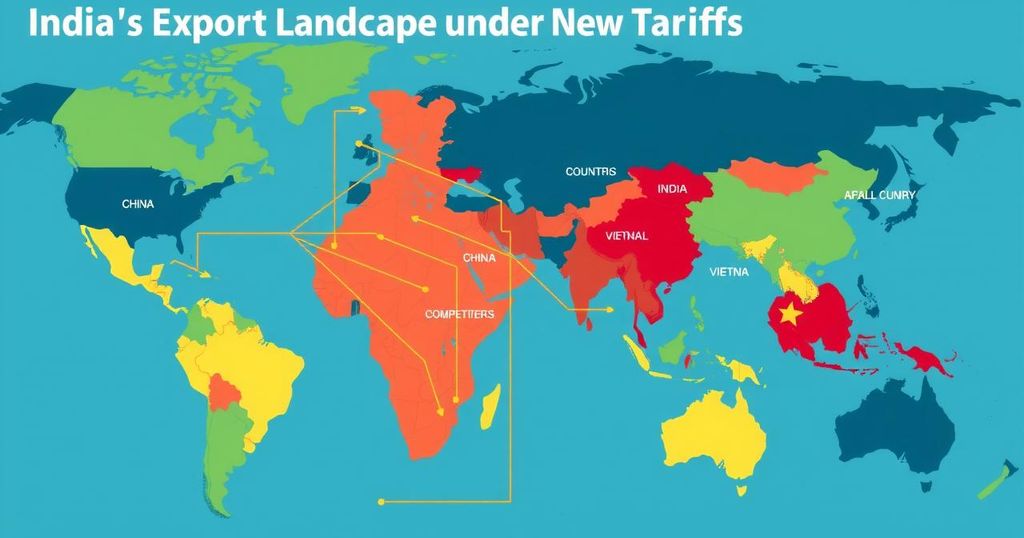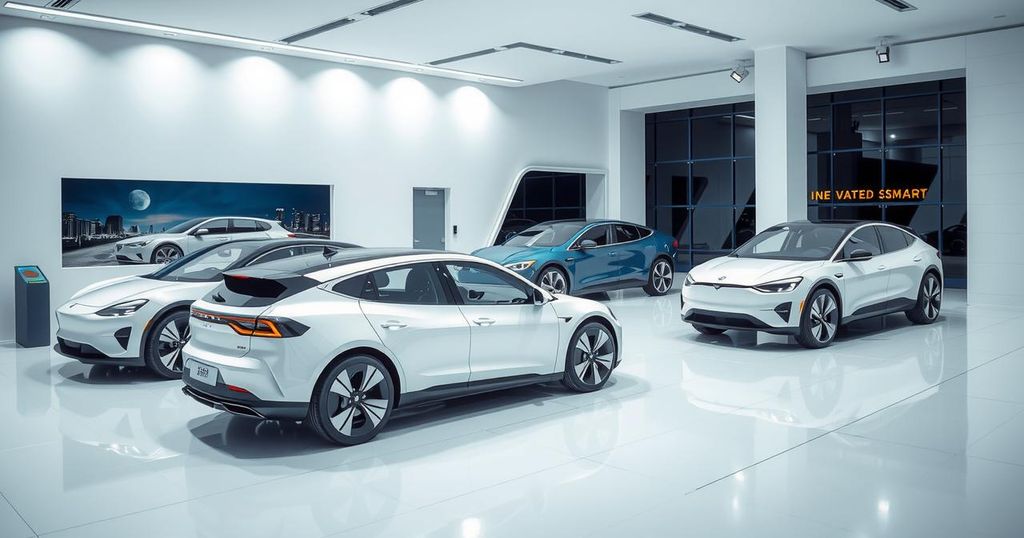Cars
AFRICA, ASIA, AUTOMOTIVE INDUSTRY, BANGLADESH, CAMBODIA, CANADA, CHINA, DONALD TRUMP, EXPORTS, FOREIGN INVESTMENT, HONDA, INDIA, INDONESIA, INTERNATIONAL TRADE, JAGUAR LAND ROVER, MEXICO, NISSAN, NORTH AMERICA, PHILIPPINES, SAUDI ARABIA, SOUTH AFRICA, SRI LANKA, SUPPLY CHAIN, TATA MOTORS, THAILAND, TRADE, UNITED STATES, US, VIETNAM
Lena Nguyen
0 Comments
Impact of U.S. Tariffs on Indian Exports: Winners and Losers Analysis
In 2023, India stands as the 12th-largest exporter but faces a 27% tariff on exports to the U.S. While this presents challenges, India may benefit relative to competitors like China and Vietnam who face higher tariffs. Sectors such as textiles could gain, while automobiles and electronics might suffer increased costs. The implications for agriculture are mixed, especially in contrast to Mexico’s competitive edge under USMCA. Trade negotiations could offer relief.
In 2023, India ranked as the world’s 12th-largest exporter with exports valued at $441 billion. However, the imposition of a 27 percent flat tariff on all exports to the United States presents significant challenges for Indian exporters. Nevertheless, this tariff creates a comparatively favorable position for India against competitors such as China, Vietnam, Bangladesh, and Indonesia, all of which face higher tariff rates.
China is confronted with a considerable 34 percent tariff, while Vietnam endures an even steeper 46 percent tariff. Bangladesh and Thailand are subjected to a 37 percent tariff, with Cambodia facing the highest at 49 percent, and Sri Lanka at 44 percent. These disparities indicate the relative advantage India may have amid the unfavorable trade conditions.
The automotive sector is especially impacted by the US’s 25 percent tariff on imported automobiles, which poses challenges to significant Asian manufacturers like Toyota, Honda, and Nissan. India’s automobile exports to the US, however, are modest, comprising only 0.13 percent of passenger vehicles and 3 percent of commercial vehicles. Tata Motors’ luxury unit, Jaguar Land Rover, which derives about 23 percent of its revenue from the US, may experience indirect repercussions.
Indian auto component exports, amounting to $21.2 billion, represent one-third of the total industry exports but contribute only 2 percent of US auto component imports. In contrast, Mexico dominates with 39 percent, followed by Canada and China. Notably, the US accounts for less than 0.5 percent of India’s total car exports, with Saudi Arabia, South Africa, and Mexico being primary destinations.
Conversely, India’s textile industry could benefit significantly from the new tariffs, as its competitors face much higher duties. For instance, Vietnam endures a 46 percent tariff, while Bangladesh faces 37 percent, and China has a 34 percent tariff. Currently, India contributes 8 percent of US textile imports, amounting to $9.7 billion, while textile’s GDP contribution is relatively minor at 2 percent.
India’s standing in the gems and jewellery sector remains strong, providing 12.99 percent of total US imports in this category. Competing nations such as France and Italy contribute lesser amounts, thereby consolidating India’s dominant role. Consequently, Indian gem and jewellery exporters are likely to bear the most significant impact due to the new tariffs compared to their global counterparts.
Agricultural exports, particularly Basmati and non-Basmati rice, buffalo meat, and wheat, will also be affected by the 27 percent tariff. Nonetheless, India may retain a price advantage in processed foods over competitors like China and Bangladesh. However, when compared to Mexico’s agricultural provisions under the US-Mexico-Canada Agreement (USMCA)—which offers a 0-5 percent tariff—India may struggle to maintain its competitiveness in fresh produce and packaged foods.
In the electronics sector, India exports $14 billion worth of electronics to the US, and the new tariffs will increase costs for these goods. Yet, India is better positioned than Vietnam and China, while Mexico benefits from tariff-free access under the USMCA for compliant products. The ongoing discussions for a bilateral trade agreement between India and the US may yield negotiations that could alleviate some of these tariffs moving forward, ensuring that Indian exports retain a competitive edge in various sectors despite the new trade barriers.
In summary, the new tariffs imposed by the United States create a complex landscape for Indian exporters in 2023. While certain sectors such as textiles may benefit from reduced competition due to higher tariffs on rivals, others like automobiles and electronics will face increased costs. The agricultural sector might be at a disadvantage compared to Mexico under the USMCA, while India’s strong position in gems and jewellery could see significant challenges. Ongoing trade negotiations may provide opportunities to mitigate these impacts and enhance the competitiveness of Indian exports.
Original Source: www.business-standard.com




Post Comment